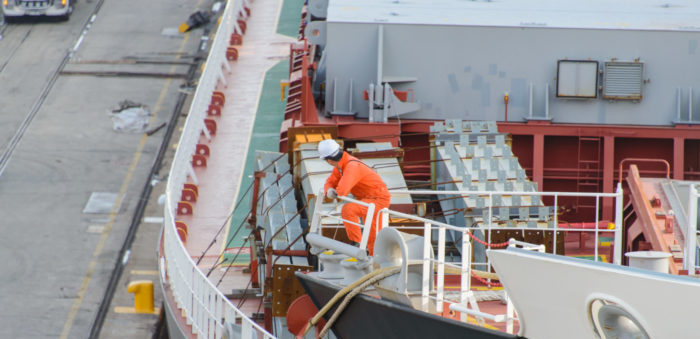Sophia Bullard, Crew Health Programme Director at UK P&I Club, provides her comments on how to address bullying and harassment on board ships. Ms. Bullard says that companies and management should be receptive to change and adopt a zero tolerance approach to deal with bullying and harassment at sea.
During the last ten years, there is an increase on the focus regarding harassment in maritime. Campaigns are taking place to increase awareness, promote fair practices and implement guidelines to deal with the issue. These are all positive steps, Sophia Bullard, but she adds that bullying continues to be a challenging issue for seafarers.
Seafarers are often perceived as ‘tough people’ in the field, but this can be a rather biased perception. Working at sea can make seafarers more vulnerable to harassment and bullying, due to the prevailing working conditions, the isolation, the tough nature of the profession and the fear of further victimisation or repercussions, if bullying is reported, as victims may be labelled as troublemakers or have their contracts terminated
[smlsubform prepend=”GET THE SAFETY4SEA IN YOUR INBOX!” showname=false emailtxt=”” emailholder=”Enter your email address” showsubmit=true submittxt=”Submit” jsthanks=false thankyou=”Thank you for subscribing to our mailing list”]
As harassment and bullying in the workplace has increased, the Maritime Labour Convention (MLC) recognised the negative effect that this situation may have on seafarer health and well-being. For this reason, it voted to bring these serious issues under Regulation 4.3 – the health and safety protection and accident protection code.
Explaining the definition of harassment, Ms. Bullard notes that it includes any inappropriate and unwelcome conduct, which, either intentionally or not, may create feelings of unease, humiliation, embarrassment or discomfort for the recipient.
As for bullying, it is a type of harassment that includes hostile or vindictive behaviour, whose results may make the recipient feel threatened or intimidated.
In order to change this situation, companies and management must be the primary active agents of change, by implementing a zero tolerance approach to deal with bullying and harassment at sea.
This can be achieved with the following steps:
- Set out clear policies and procedures for dealing with harassment and bullying onboard;
- Communicate company’s policies regarding harassment to everyone onboard (in native language of crew members);
- Organise awareness programs, training sessions, campaigns, videos, conferences and other media;
- Create channels of reporting and actions to be taken when a complaint is filed;
- Ensure privacy and confidentiality to encourage disclosure;
- Establish clear job roles, expectations and responsibilities;
- Invest in ongoing training;
- Apply fair and transparent processes for allocating tasks, job roles, etc.;
- Educate everyone for early warning signs, such as when a seafarer looks sad, lonely, scared, isolated, not motivated, low performance, complains of physical symptoms, avoids social interactions, etc.;
- Implement emotional intelligence programs to encourage self-awareness, social awareness and conflict resolution;
- Organize team building sessions, inspirational leadership trainings and cultural diversity working groups;
- Organize activities to promote social interactions onboard.
Bullying and harassment are important issues in any workplace environment, and this is particularly true at sea due to the cultural diversity of crew and the unique pressures that they are exposed to. Increasing people’s knowledge around the topic can significantly decrease incidents of bullying and harassment
Sophia Bullard concludes.


































































Is degrading a person also example of bullying? Is Questioning your ability also type of bullying?